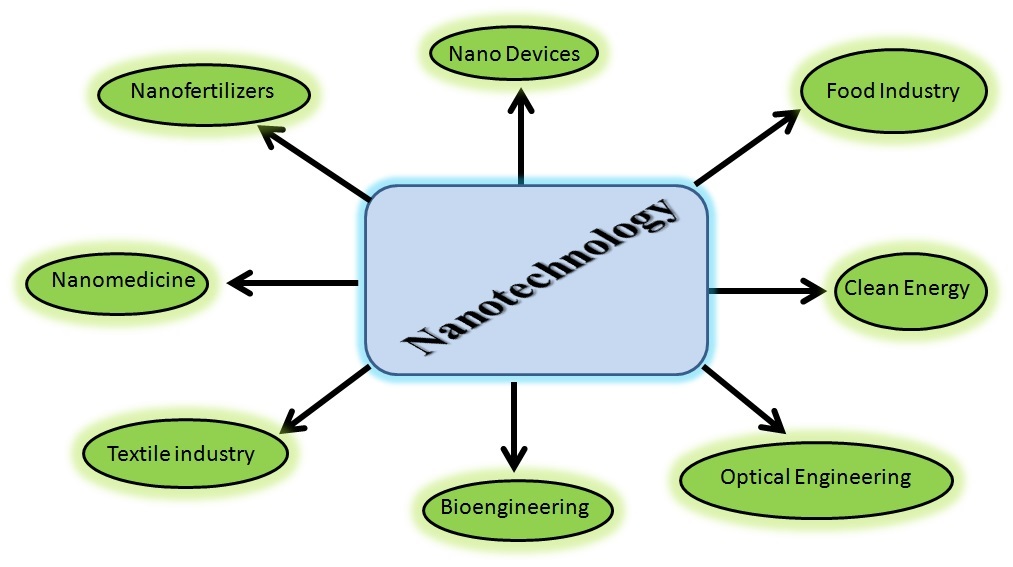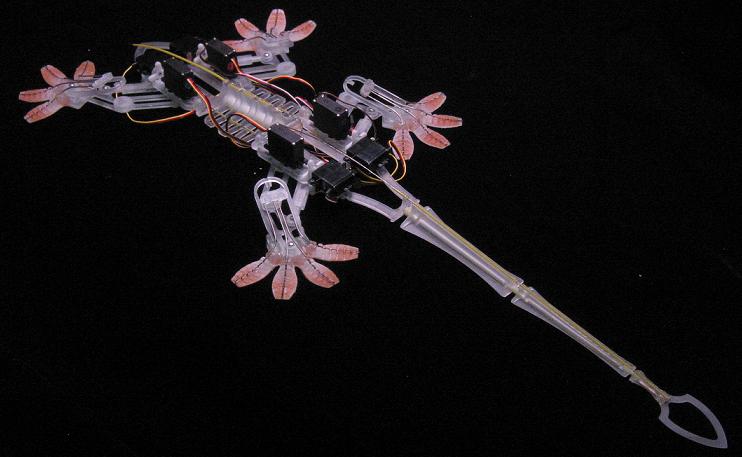Difference Between Nanorobotics and Nanotechnology
Nanotechnology is a relatively new science but you can see its numerous applications in everyday life from next generation water supply systems to environmental cleanup applications and from consumer products to medicinal purposes. In fact, several scientific journals and papers that are solely dedicated to nanotechnology are being published each year. In addition, the study of unconventional features of nano-particles has received a surge through the versatile applications of materials precisely engineered for nanotechnology. So, what is nanotechnology and how does it impact our society? Nanotechnology is a general purpose technology that concerns the control of matter on atomic and supramolecular scale – the things that are of dimension less than 100 nanometers.
In the last couple of years, nanotechnology has become one of the most significant forefront fields in Physics, Chemistry, Biology, and Engineering. The research area of nanotechnology is interdisciplinary and very vast that covers a wide range of subjects ranging from chemistry of nanoparticles to the physics of the quantum dot laser. And then there’s nanorobotics. In recent years, real applications of nanorobotics have been discovered. Nanorobotics is the study of robotics at the nanometer scale, and includes robots that are able to perform tasks at the nanoscale and are commonly called “NanoRobots.” Nanorobotics is based on the emerging field of nanotechnology. Let’s take a brief look at the two.

Nanotechnology
Nanotechnology is a general purpose technology based on the recognition of particles that are less than the size of 100 nanometers. The term ‘nano’ in nanotechnology means a billionth (1e-9). Nanotechnology deals with several structures of matter with dimensions of the order of a billionth of a meter, which is very tiny, only the length of a few hydrogen atoms. Although, nanotechnology is a relatively new field of research, the existence of functional devices and structures of particles of dimensions in nanometers is not new. Nanotechnology is basically the design, production and applications of materials at the nanoscale and to create and use structures, devices and systems that have functions because of their small or intermediate size. It provides solutions to many long-standing medical, social and environmental problems.

Nanorobotics
Nanorobotics is the study of robotics at the nanometer scale, and includes robots that are able to perform tasks at the nanoscale. The emerging field of nanorobotics is concerned with the design, programming, manufacturing, and control of robots at the nanometer scale. These tiny robots are called nanorobots or nanobots or nanites. However, these fancy terms do not accurately represent the engineering aspects of the system. Various engineering disciplines contribute to the field of nanorobotics, including nanomaterial synthesis, nanobiotechnology, nanosensors, nanoactuators, and microscopy for imaging and characterization. It emphasizes the engineering aspect of nanophysics and includes the manufacturing and application technologies of nanorobotics manipulation systems and nanoelectromechanical systems (NEMS).
Difference between Nanorobotics and Nanotechnology
Definition
– Nanotechnology is the study and application of extremely tiny particles with dimensions of the order of a billionth of a meter, which is very tiny, only the length of a few hydrogen atoms. The research area of nanotechnology is interdisciplinary that covers a wide range of subjects ranging from chemistry of nanoparticles to the physics of the quantum dot laser. Nanorobotics, on the other hand, is the study of robotics at the nanometer scale, and includes robots that are able to perform tasks at the nanoscale. It is the technology of creating machines or robots at the nanometer scale.
Goal
– Nanotechnology provides solutions to many medical, environmental and social problems. The goal of nanotechnology is to direct atoms and molecules to form desired structures or patterns with novel functionality and to create and use structures, devices and systems that have functions because of their small or intermediate size. The goal of nanorobotics is to provide effective tools for the experimental exploration of the nanoworld, and to push the boundaries of this exploration from the perspective of robotics research. The field of nanorobotics is concerned with the design, programming, manufacturing, and control of robots at the nanometer scale.
Applications
– Nanotechnology can be used to transform energy production and storage by providing alternative to current practices which may result in reduced emissions and better energy efficiency. Nanotechnology can be used in drug delivery which involves nanoscale particles to improve the bioavailability of a drug. Other applications of nanotechnology include tissue engineering, bioinformatics, information technology and applications, agriculture and food industry, environmental cleaning, smart delivery systems, etc.
Nanorobots are tiny robots that are used for protecting the human body against pathogens. For example, scientists use nanobots to kill cancer cells, or to deliver drugs to target tissue cells. Nanorobots play a key role in biotechnology, medicine, electronics, and in materials research and development. One of the promising applications of nanorobotics is nanodentistry, whereby nanobots help in inducing oral anesthesia, teeth straightening, and improvement of teeth durability.
Nanorobotics vs. Nanotechnology: Comparison Chart

Summary
Nanotechnology is a general purpose technology that concerns the control of matter on atomic and supramolecular scale meaning particles with dimensions of the order of a billionth of a meter. Nanorobotics is the study of robotics at the nanometer scale, and includes robots that are able to perform tasks at the nanoscale. Technologies that control and manipulate matter on the nanoscale play a key role in everything from medicine and electronics to biotechnology and materials research and development.
- Difference Between Caucus and Primary - June 18, 2024
- Difference Between PPO and POS - May 30, 2024
- Difference Between RFID and NFC - May 28, 2024
Search DifferenceBetween.net :
Leave a Response
References :
[0]Image credit: https://en.wikipedia.org/wiki/Bio-inspired_robotics#/media/File:Stickybot.jpg
[1]Image credit: https://commons.wikimedia.org/wiki/File:Application_of_nanotechnology.jpg
[2]Ramsden, Jeremy. Nanotechnology: An Introduction. Burlington, Massachusetts: William Andrew, 2011. Print
[3]Fulekar, M.H. Nanotechnology: Importance and Applications. New Delhi, India: I.K. Publishing, 2010. Print
[4]Poole Jr., Charles P. and Frank J. Owens. Introduction to Nanotechnology. Hoboken, New Jersey: John Wiley & Sons, 2003. Print
[5]Sattler, Klaus D. Handbook of Nanophysics: Nanomedicine and Nanorobotics. Boca Raton, Florida: CRC Press, 2010. Print
[6]Mavroidis, Constantinos and Antoine Ferreira. Nanorobotics: Current Approaches and Techniques. Berlin, Germany: Springer, 2013. Print
